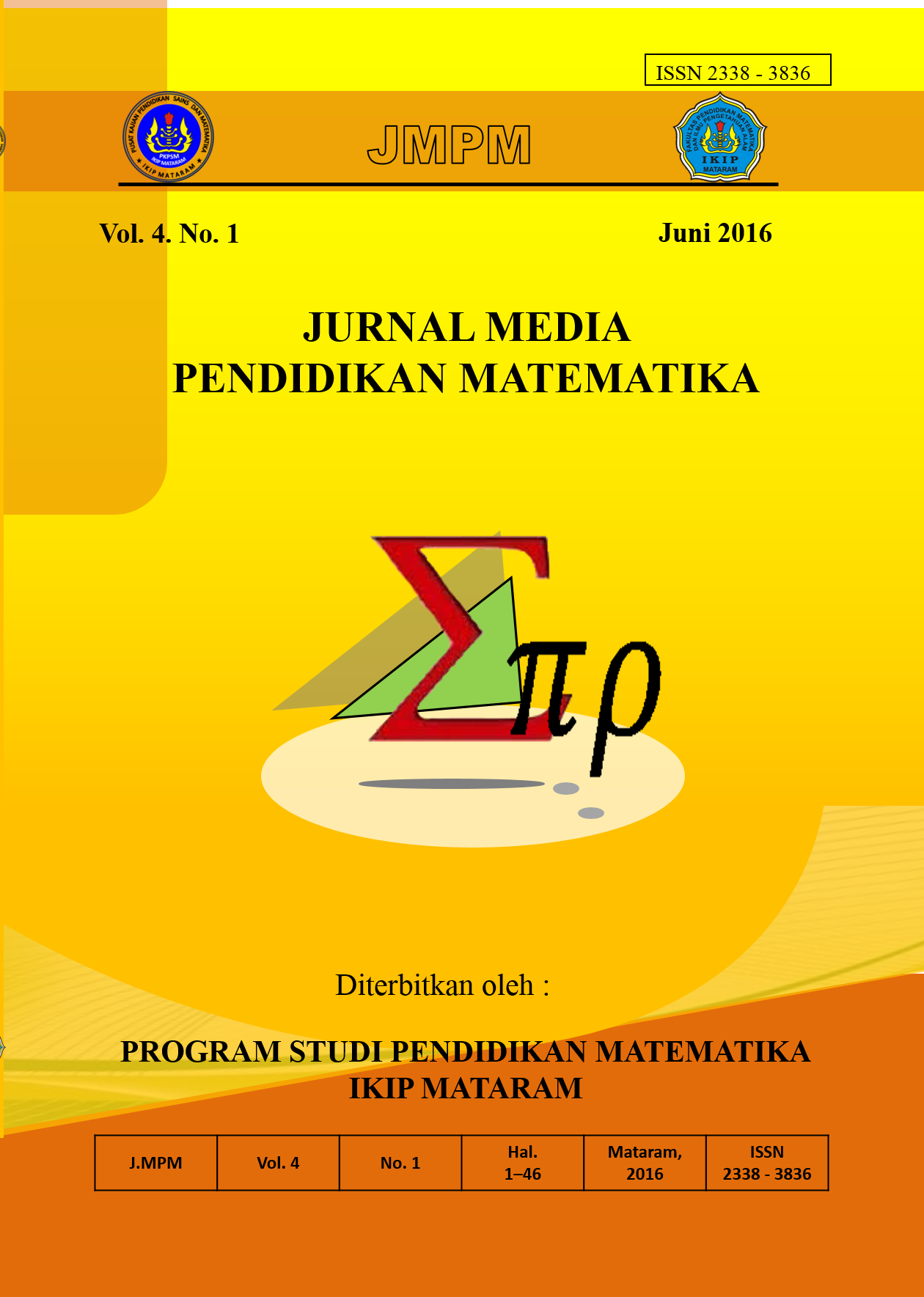PENGEMBANGAN MULTIMEDIA INTERAKTIF BERBASIS POWER POINT (MACRO-ENABLED) PADA MATA KULIAH GEOMETRI EUCLID DALAM PEMBELAJARAN MATEMATIKA
DOI:
https://doi.org/10.33394/mpm.v4i1.127Keywords:
Development, Game, Power point (Macro-Enable), Euclid GeometryAbstract
This development research aims is to develop an interactive of mathematics learning media using Visual Basic for Application based on Ms. program. Power Point. The development of this medium was using 4D development model, namely: (D) efine, (D) esign, (D) evelop, (D) issiminate, and the resulting product in the form of learning media on Euclid geometry subject. Based on the trial of product, the material expert stated that the product is valid with the validity percentage of 82.5%, the media expert stated that the product is valid with the validity percentage of 83.4%, and the practitioner stated that the product is valid with the validity percentage of 86% and the user / user stated the product practically with the percentage of practicality is 84%. Thus, it can be concluded that the resulting product is valid and the product can be applied in the classroom as well as beneficial for the students.
Downloads
Published
2016-06-17
How to Cite
Nursit, I. (2016). PENGEMBANGAN MULTIMEDIA INTERAKTIF BERBASIS POWER POINT (MACRO-ENABLED) PADA MATA KULIAH GEOMETRI EUCLID DALAM PEMBELAJARAN MATEMATIKA. Media Pendidikan Matematika, 4(1), 41–49. https://doi.org/10.33394/mpm.v4i1.127
Issue
Section
Articles
Citation Check
License
Authors who publish with this journal agree to the following terms:
- Authors retain copyright and grant the journal right of first publication with the work simultaneously licensed under a Creative Commons Attribution License that allows others to share the work with an acknowledgement of the work's authorship and initial publication in this journal.
- Authors are able to enter into separate, additional contractual arrangements for the non-exclusive distribution of the journal's published version of the work (e.g., post it to an institutional repository or publish it in a book), with an acknowledgement of its initial publication in this journal.
- Authors are permitted and encouraged to post their work online (e.g., in institutional repositories or on their website) prior to and during the submission process, as it can lead to productive exchanges, as well as earlier and greater citation of published work (See The Effect of Open Access).
Â






